Productivity
How to Make Your Company Mentally and Emotionally Healthy? Expert Tips and Practices

Emotions. Feelings. Healthy mind, body, and soul… We don’t usually talk about this “stuff” at work. For goodness’ sake, we are making money! We don’t have time for all these “sentiments,” right?
Well, not really. Our emotional health is precious by itself. But since we are talking business here, let me quote a number.
According to the Deloitte study, the total cost of mental health to employers is £1,035 per employee.
Did you get it? Employers could save over £1000 per employee if companies foucsed on mental health. (These are the UK statistics, but I bet they’re similar in many countries.)
If we want our businesses to thrive, we should start taking mental health in companies seriously.

In that spirit, our team prepared an exclusive piece of content for you.
We talked to Yurii Kravchenko, a top business and organizational consultant, about ‘5 psychological threats to businesses.’
How do we assess mental and emotional health issues in organizations? What should we do to keep our companies healthy?
We are happy to share some great insights with you.
5 psychological threats to businesses (and how to handle them)
The concept we’ll be talking about was originally developed by Yurii. He doesn’t claim it to be comprehensive. However, it’s well-designed enough to provide some profound insights about mental and emotional health in our companies.
I’m going to retell you the whole concept as explained by its author. Each “psychological threat” is associated with a particular character in the biblical Book of Revelation. These metaphors might help in better understanding the threats of emotional and mental health. I’ve also included some expert tips on how to eliminate a possible danger and some suggestions on where to learn more about it.
In truth, I’ve slightly adapted the concept for better understanding. But I did my best to leave the key ideas untouched. So, hopefully, after reading this article, you’ll know how to make your company more healthy and happy.
So here are the five threats:
1. False righteousness

Here’s an example
I used to work in a company where physical presence was the most valuable asset. Each morning, the boss would enter the open-plan office, look around at his workers, smile contentedly, and retreat to his private office. The company wasn’t thriving, though. The KPIs were fudged. People did their best to be seen at work but actually showed little success. However, everything seemed spick and span from the outside.
That’s why, in theological context, this threat relates to the horseman on the white horse. The color white speaks for purity — or false purity — in our case.
Here’s a description
I bet you’ve already captured the idea of the first threat. “False righteousness” is all about seeming good and fair, while in reality, things might actually be messy. There’s always the other side of the coin, and everyone has a shadow when exposed to light. And quite often, we are afraid of it.
It’s great to explain this threat by talking about absenteeism and presenteeism. Absenteeism — a regular absence from work — is a bad thing, right? Most managers appreciate having their subordinates in the office. But does it actually yield benefits? Our expert Yurii fights a popular belief:
Just because we drove our workers into the office or simply made them obedient doesn’t mean they will be present at work with their hearts and minds.
He proceeds with talking about presenteeism, a situation when people want their employers to see they are working hard:
Low absenteeism: “Everybody’s at the office. All is well”— this can cover a lot of presenteeism. Employees can be physically present at work but emotionally and energetically absent, not contributing to business processes.
The antidote to presenteeism would be the “heart-head-hand” model developed by Nossrat Peseschkian, a famous German psychologist and founder of positive psychotherapy. We need to be present at work not only with our heads but also with our hearts and hands. Then we are truly working.
What to do?
It could be healthy for every team to discover their own “false righteousness.” Are there any facts, numbers, or processes considered trouble-free but in fact having a nasty effect? Does presenteeism take place in your company? Managers can bring up these topics at meetings with HR. It’s all about open communication and speaking the truth while also being respectful.
Where to learn more?
Yurii recommends Otto Kernberg’s book, ”Ideology, Conflict, and Leadership in Groups and Organizations.” Some entrepreneurs could recognize themselves in the cases provided in this text, although it’s not bedtime reading. Two other useful books are “Alpha Male Syndrome” by Kate Ludeman and “The Leader on the Couch” by Manfred F.R. Kets de Vries.
2. Fratricidal war

Here’s an example
A Europe-based company creates products for a Silicon Valley tech giant. As the business of the smaller firm thrives, its owner and a product manager come to California to discuss further collaboration. The guys from the tech giant give a very warm welcome to PM, with whom they’ve been interacting daily. The business owner, however, whom they hardly knew, is given the cold shoulder. He is hurt, and once they are back in Europe, he starts mobbing the PM in front of the staff. And there a fratricidal war begins…
This case, shared with me by Yurii, describes the second threat. And since we are talking about a war (a big conflict) in a company, the horseman rides the red horse in theological context.
Have you ever experienced fratricidal war in an organization? I’m sure we all had…
Here’s a description
Put simply, when a fratricidal war begins, resources go to the wrong places. People come to work with some strength and stamina. But they direct their efforts toward mobbing the colleagues and making them miserable and nobody cares about emotional health. They act out their ‘life scenarios,’ start unnecessary conflicts, depreciate each other’s efforts, etc.
When explaining this threat, Yurii uses the term “psychodynamics.” It describes “mental and emotional forces that developed earlier and affect our present behavior.” Put simply, it redirects our precious resources from the future to the past. People are basically looking back all the time instead of looking forward.
That’s a curious GIF to illustrate the threat. Because, you know, wrestling is a make-believe fight. While “fratricidal war” is violent in nature, it can be seen as a game, which is quite dangerous. Here’s Yurii’s explanation:
When it comes to the fratricidal war in a company, there is an illusion that we are not bored, that life goes on, and we are busy doing something. But this energy is spent neither on achieving goals nor on creating products. It’s directed to the past, not the future.
“The most dangerous mobbing,” he adds, “is the one justified by the power of the leader,” like in the example listed a few paragraphs above.
What to do?
As mentioned, top managers and HR professionals can usually handle the first threat on their own. But starting with the second threat, it might be healthier to seek out the other experts’ help. When the “frictidal war’ is going on, this help should come from outside a company. Because those who work in it can hardly stay calm and unbiased. An organization could invite an external business coach. Despite having little power, he or she can serve as a mirror for those who work within the system. This might help a company get to the root of the problem and resolve a conflict.
Where to learn more?
Some works of Wilfred Bion’s and his followers can shed light on how to build an emotionally intelligent team. The British psychoanalyst wrote a lot about group processes and dynamics, discovering the basic assumptions of groups, such as dependency, fight-flight, and pairing.
3. Disbalance, exhaustion and burnout

Here’s an example
A few years back, I worked at one of the best newsrooms in the country. My colleague clearly had burnout and nobody was paying attention to mental health. She was a journalist specializing in medicine, doing very difficult news pieces about children who needed urgent treatment. She even fought authorities to make some law amends that help kids get medical help and survive. I remember her coming to the office absolutely exhausted. Later, she took almost a 2-month vacation. Luckily, it helped, and she got back to work.
In the theological context, the third horseman has not a weapon but a “tool” in his hand. It’s a pair of scales, which in our case may symbolize the balance of life.
Here’s a description
The threat shows up when a lot of energy has gone to the wrong places. There’s probably no single word for describing it. It’s a triad: disbalance, exhaustion, and burnout. When physical and emotional powers are drained and we are not focusing on our mental health, people lose the meaning of what they do. Teams are exhausted.
The concept of burnout has been actively developed since the 1970s. The approach presented by Christina Maslach and Susan E. Jackson highlighted the scientific view on the issue. There are four stages of burnout. First, people are just tired. Second, not only do they lose energy, but also joy and pleasure are gone. At the third stage, a job loses its meaning and value. The fourth stage is a breakdown and this is where you start losing your emotional health.
Clearly, achieving “work-life balance” is a solution. At the same time, our expert came up with another term:
The term “work-life balance” might seem misleading. I’m against using it because it assumes that “work” is not “life.” Staying healthy means we live our lives fully — not only after but also at work. That’s why I’d say it’s a question of ‘life balance,” not ‘work-life’ balance.
To recognize the threat, HRs can assess the emotional capital of employees. Can workers take up their additional resources in challenging situations? If they tend to burn out facing the slightest challenge, the threat is dangerously close.
What to do?
As mentioned, to face the second threat, we could invite a business coach who is familiar with group processes. But when it comes to the third threat, this skill might not be enough. In this case, companies need an expert with profound knowledge of human nature and personal psychology. Therefore, life coaches and corporate therapists might help on mental and emotional health. Also, companies can run regular health checkups to assess burnout, as it inevitably affects our bodies.
What to read?
The Austrian psychotherapist Alfred Langle and his colleagues working in the field of existential therapy can share some profound insights on how to deal with burnout. The book ‘Living Your Own Life’ by Sylvia Laengle available in English might help.
4. Subtle chronic daily stress

Here’s an example
This is going to be serious and alarming. A few years back, one of my colleagues actually died at work. Cardiac arrest — as doctors say — probably occurred because the girl worried too much. She was a scenarist for a very successful TV project. Despite working hard, she was always full of energy, and nobody saw the tragedy coming.
This terrible story describes the fourth threat. The horseman is ‘pale’ and has neither a weapon nor a tool. In our context, it means we might not assume he poses a danger.
Here’s a description
This threat sounds similar to the previous one, but Yurii distinguishes them clearly. The possible danger this “horseman” carries is hard to notice. Certain people who suffer from chronic stress simply grin and bear it, assuming that things are the same at work.
Here’s how Yurii puts it:
Some people do not respond to stress by becoming burned out. They get used to the small, chronic pressure that builds up with time. They talk about experiencing “difficulties” or even “challenges.” This can result in a sharp transition to burnout, which, of course, should be prevented.
Yurii proceeds with explaining that modern immunology considers stress to be our number one enemy. Casual chronic worries are the most harmful and toxic, and they may cause oncology or autoimmune diseases or trigger a heart attack.
To diagnose the threat, HRs could assess stress levels, defining micro- and macro-stressors and their impacts. It may turn out that some seemingly smaller challenges, like everyday meetings, cause much more stress than actual work.
What to do?
The recommendations are similar to the ones listed for the previous (third) threat. Coaches and therapists might work one-on-one with company workers, including top managers. The key goals would be finding life balance, identifying stressors, and dealing with them in a constructive way. Again, medical tests might reveal our true exposure to stress because we can actually deceive ourselves by thinking “all is fine”. Only if your physician says your immune system is great might you not be really affected by chronic stress.
Where to learn more?
Nossrat Pezeshkian, the world-famous author and psychologist mentioned earlier, has some profound tips on how to handle everyday stress and its consequences. His book ‘Positive Psychosomatics’ and others could be a nice read for those interested in body-mind psychology and restoring life balance.
5. Pathological organizational system

Here’s an example
Recently, my close friend was hired by a respective higher learning facility. By the way, it’s quite popular; many people are excited to get there – either to work or to study. However, each time she entered that revolving door, she started feeling bad. When she was out of the office, she would sigh a sweet breath of relief. A lot of closed-door meetings, colleagues muttering to each other, and multiple double-talks drove her crazy. Luckily, she quit in a month or two. As she discovered later, the facility was extremely corrupted.
The theological metaphor describing this threat is actually spooky — it’s a creature with heads and horns. Yikes!
Here’s a description
“Well, this is an ugly system,” Yurii explains. Very often, when we face this threat, it’s too late for troubleshooting — a company hangs by a thread. We should renew quite a lot, starting with the organizational structure.
Here’s the expert’s take on recognizing the threat:
We should look at the people who enter and leave a company. If a person is usually well, but at the office they feel bad and toxic, this might be a telltale sign that the organizational system is in trouble.
To assess a threat, we should lootake self-care measures, seek help from life coaches or (corporate) therapists to find the cause of a problem; run a medical check-upk closely at how people feel in the first month or two on the job. In most cases, it becomes clear within a half-year whether a system is seriously troubled.
Many destructive processes take place in a pathological system. Gaslighting could be one of them, meaning that workers or even bosses attempt to make a colleague believe that he or she is going insane.
What to do?
As mentioned, when it comes to the last threat, it’s hard to do anything. But if you’re up for a challenge, expert help is crucial. This is where consultants specializing in organizational design step into the game. They identify dysfunctional aspects of work flow, realign them to fit your business goals and develop plans to implement the new changes. Be ready for a long and meticulous job.
Where to learn more?
Exploring the ideas of holacracy and sociocracy might help, as well as expert materials on how modern organizations are redesigning their structures.
[Tweet-bottom “The term ‘work-life balance’ might seem misleading. I’m against using it because it assumes that ‘work’ is not ‘life’”]
Wrapping up
So far, we’ve discussed 5 psychological threats to businesses
- ‘False righteousness’ that can be eased up by putting some seemingly good practices under question and leaders having frank conversations with HR specialists.
- ‘Fratricidal war’ which is easier to be recognized and stopped with the help of experts from outside a company.
- ‘Disbalance, exhaustion and burnout’. In this case, life coaches and therapists can help in restoring life balance.
- ‘Subtle chronic daily stress’ which can be diagnosed not only using psychological tests but also via medical screening.
- ‘Pathological organizational system’ which means the structure of a company needs to be redesigned.
5 Psychological threats to businesses (and how to handle them) — checklist
- 🕊️ False Righteousness
“Issues? We don’t have any. Everything’s perfect.”
🔍 Are we denying or ignoring real challenges?
🕳️ Have we checked for blind spots (e.g. presenteeism)?
🤝 Have HRs and top managers discussed hidden tensions?
✅ Solution: Identify ignored issues with leadership & HR
📚 Read: Otto Kernberg – Ideology, Conflict, and Leadership in Groups and Organizations
2. ⚔️ Fratricidal War
“Let’s give hell to the guy in the next cubicle.”
🧨 Are there unresolved office conflicts or team fights?
⏪ Are we stuck in the past instead of moving forward?
✅ Solution:
🧑💼 End squabbles early (HR + team leads)
🧘♂️ Resolve deeper conflicts with external help (coach, mediator)
📚 Read: Wilfred Bion & his followers
3. 🔋 Burnout & Exhaustion
“I’m trapped… what’s the point?”
🛑 Are team members physically and emotionally drained?
🕯️ Are we ignoring clear signs of burnout?
✅ Solution:
🧘 Promote self-care routines
🗣️ Offer coaching or therapy support
🩺 Encourage full medical check-ups
📚 Read: Alfred Langle & existential therapy
4. ☕ Chronic Daily Stress
“I’ve been tired for months… it’s fine.”
💤 Is subtle, ongoing stress being overlooked?
🧃 Are we masking fatigue with caffeine and habit?
✅ Solution:
🚨 Recognize the danger early
🧘♀️ Support rest and recovery
👩⚕️ Involve coaches, therapists, or even immunologists
📚 Read: Nossrat Pezeshkian – Positive Psychosomatics
5. 🧱 Pathological Organizational System
“I feel crazy at work — and it’s not me.”
🧩 Is the system itself damaging mental health?
📉 Are decisions unclear, unfair, or chaotic?
✅ Solution: Redesign with expert help
📚 Read: Holacracy & Sociocracy models
A healthy company culture means:
🗣️ Honest yet respectful communication
🧭 Staying connected to values and mission
👯♀️ Promoting collaboration, not rivalry
⚖️ Maintaining life-work balance
🆘 Seeking expert support when needed
We live our lives fully — not only on weekends, but also at work.
Is health in organizations a real thing?
After hearing about all these threats, we became a little stressed ourselves. So we asked Yurii if emotional and mental health were possible at all. Here’s his take on the issue:
Health is not just the absence of disease — it’s a continuously changing state. So the dynamic well-being is possible—the intention towards well-being where values and results matter.
In other words, the more unhealthy a company is, the less alive its employees feel. In this case, people don’t fully live after work because they are tired and messed up. If a company is healthy, people do live at work — not only at the weekends.
That’s nearly all! We hope you enjoyed our take on psychological threats to businesses. Feel free to post your feedback, comments, and questions below.
Productivity
11 Ways Communication Can Help Professional Coaching in Online Setting

In the age of screens and emojis, it’s no wonder that coaching has taken a digital leap. Professional coaching in an online setting is the new talk of the town. And with good communication, you can take it to some great heights!
Gone are the days of face-to-face sessions and awkwardly trying to balance a latte while taking notes. Now, you can coach clients from the comfort of your pajamas, or, let’s be honest, from your favorite pair of fuzzy socks.
Picture this: renowned coaches like Tony Robbins, Robin Sharma, and Rich Litvin have ditched the traditional coaching game and hopped on the digital bandwagon. They’ve traded in their briefcases for laptops and their office walls for virtual backgrounds.
And why not? The professional coaching market is projected to skyrocket to a whopping $4.5 billion by 2028, according to Forbes. It’s like hitting the jackpot but without the flashing lights and cha-ching sounds.
If you are considering venturing into the online coaching world or want to enhance your coaching practice with good communication, this article is for you.
But before we dive into the nitty-gritty, let’s address the elephant in the digital room, shall we?
Unmasking the guru aka professional coach in a digital setting
Now, let’s meet the star of our show: the professional coach. Picture a regular coach, but with a digital twist. They’re like your personal cheerleader and accountability buddy, all rolled into one virtual package. But here’s the kicker – they don’t do the whole “in-person” thing.
Professional coaches have embraced the wonders of the digital era, harnessing the power of video conferencing platforms and online resources to guide their clients toward success. Say goodbye to the days of commuting and hello to the magic of a virtual meeting room. Who needs a stuffy office when you can create your coaching empire from the comfort of your own home?
These tech-savvy gurus work with clients to define their goals, develop actionable plans, and provide the tools and expertise needed to conquer the tasks at hand.
And with good communication as their secret weapon, a professional coach can take the industry by storm. Effective communication skills are the key to their success in unmasking the guru within them and delivering exceptional coaching experiences.
5 types of professional coaching you should know about
Now that we’ve cracked the code on professional coaching, let’s take a whimsical journey through the wonderland of coaching programs. Here are five types of coaching programs that will make your coaching business soar.
1. Executive coaching: where CEOs find their fairy godmother
Online executive coaching is among the most popular programs available for C-suite executives, business owners, and high-level managers. An executive coach helps top-level leaders establish team synergy, train them in problem-solving techniques, deal with change management, and implement new ideas.
2. Sales coaching: turning sales warriors into superstars
Online sales coaching is a skills-oriented coaching program in which a sales expert trains and mentors aspiring sales professionals. With online sales coaching, you’ll embark on a quest to master the art of closing deals and smashing targets. Through mock conversations, role-playing, and invaluable feedback, a sales expert will train and mentor you to engage with clients of all shapes and sizes.
3. Team coaching: unleashing the power of collaboration
Team coaching is a type of online group coaching in which team members learn about collaboration and establish team dynamics through different challenges. If your organization is in need of some harmony and cross-functional magic, team coaching is here to save the day. Together, you’ll break down barriers, build bridges, and create a symphony of success. It’s like a team-building retreat without the trust falls and awkward icebreakers.
4. Holistic health coaching: finding zen in a digital world
In a world full of deadlines, stress, and Zoom fatigue, taking care of your well-being is essential. Enter the realm of online holistic health coaching, where wellness warriors guide you on a journey of self-discovery. These virtual gurus help you focus on your physical, mental, emotional, and spiritual health. Whether you’re seeking work-life balance, better nutrition, or a moment of Zen amidst the chaos, these coaches have got your back. It’s like having your wellness genie ready to grant your wellness wishes.
5. Transformational coaching: from ordinary to extraordinary
Online transformational coaching is one of the most popular types of virtual coaching programs designed for individuals looking to transform their morning motivation, habits, lifestyle, appearance, and personality to find greater fulfillment in life and achieve different professional and personal goals.
The role of communication in setting up professional coaching
Starting a professional coaching business opens up a world of opportunities, allowing you to leverage technology, connect with clients globally, and embrace the flexibility and scalability that the digital landscape provides.
In this chapter, we’ll explore the 11 essential steps on how communication can help you when stepping into professional coaching.
1. Finding your coaching business idea
The first thing you need to do when starting a coaching business is come up with an idea.
Fortunately, you don’t have to do something that’s never been done before. Instead, you can search online for trends in the coaching industry.
Remember, people will pay for your skills and experiences.
So, ask yourself, “What are your strengths?”
For instance, if you’re a successful real estate investor or stock trader, you can coach others looking to venture into the industry using real estate software.
You can also create a short course based on your investing or trading expertise to provide a more complete learning solution.
Role of communication: Effective communication allows you to understand your strengths and identify the skills and experiences you can offer to potential clients. It helps you articulate your ideas clearly and concisely, making it easier for others to understand the value you bring as a coach.
2. Pick your niche
Today, you can find hundreds of coaching business ideas with a simple Google search.
However, you have to follow a formula that works for you. Remember, the purpose of coaching is to help others solve problems or adopt new skills and habits.
So, you need to pick a niche that you’re good at to be successful.
Some of the most popular niches in the market include:
- Life skills (public speaking, emotional intelligence, confidence, etc.)
- Family (household management, relationships, birth coaching, etc.)
- Personal development (career counseling, fitness, etc.)
- Leadership
- Finance
- Marketing and sales
- Digital transformation
- Pet handling
- Spirituality
- Health, etc.
Role of communication: When selecting a niche, good communication enables you to communicate your expertise and specialization effectively. For example, if you’re interested in developing your finances, a student loan debt coach could lend their expertise on topics like how to refinance private student loans or complex financial strategies to attract clients looking for guidance in this area.
It helps you convey to potential clients how your coaching services can address their specific problems or help them develop new skills and habits.
3. Determine your target audience
Once you have an idea and a niche to target, you need to understand who your clients are.
In the beginning, this might be difficult since your coaching services might not appeal to everyone.
However, you should have a good sense of your ideal clients.
The best way to do that is to understand the pain points in your area of expertise.
For example, if you’re a canine behaviorist specializing in handling different dog breeds, your target audience would be owners struggling to handle their dogs.
Role of communication: Understanding your target audience requires effective communication to gather insights into their pain points and challenges. By actively listening and engaging in meaningful conversations, you can tailor your coaching approach to resonate with their needs and aspirations.
4. Establish your coaching model
Next, you need to determine whether you want to coach clients individually or as a group.
One-on-one sessions will allow you to focus on one client at a time and offer more personalized advice and guidance.
In contrast, group coaching will allow you to coach multiple clients in a single session. More importantly, it will provide clients with the chance to work on their goals together without the need to be physically present at a designated venue.
In other words, you can help them create a sense of community and build accountability from anywhere.
You can prompt clients to stay motivated through continuous social support. Because people are generally more inclined to show up for sessions when they know other members are doing the same.
So, there are fewer chances of them making excuses, especially since they’re potentially just a few taps or clicks away from joining a session via a communication tools.
Role of communication: In choosing whether to coach individually or in groups, good communication ensures clear and transparent communication with clients about the benefits and outcomes of each approach. It allows you to set expectations, address any concerns, and foster a sense of community and accountability among group coaching participants.
5. Choose your professional coaching business name
Once you complete the steps above, it’s time to choose a name for your professional coaching business.
This will be the first step you take to create your brand. Most online coaches use their names and put “coaching” or “consulting” at the end.
Using your name also improves search engine rankings, meaning your site or information will likely appear on the first page of results.
Role of communication: Communication plays a significant role in creating a memorable and impactful business name. It helps convey your coaching brand’s essence and positioning to potential clients, making it easier for them to connect with your services.
6. Create your coaching program
Now that you have a name for your coaching business, you’re all set to create a signature professional coaching program for your clients, encompassing everything from structure to steps and resources.
For instance, if you’re a career coach looking to help clients switch careers, your program should include the following:
- An assessment of current job satisfaction levels and reasons for switching
- A review of your skills, expertise, and experience
- Upskilling and reskilling consulting sessions
- Job hunting and interviewing consulting sessions
- Transition management, etc.
Role of communication: Effective communication is essential in designing a comprehensive coaching program. It allows you to clearly define the structure, steps, and resources involved, ensuring clients understand the value they will receive and the outcomes they can expect from your coaching.
7. Pick your coaching platform
In recent years, there’s been a rapid influx of online coaching platforms on the market. These solutions contain various tools you can use to set up and run a digital coaching business.
Common tools include:
- Tools for scheduling sessions
- Video meetings
- Marketing funnels
- Built-in legal documents, such as client agreements and terms and conditions
- Google spreadsheets
- Website hosting (Bluehost, WP Engine, etc.)
Some coaching platforms also serve as marketplaces where you can promote your coaching business to thousands of potential clients.
Role of communication: Internal communication tools and platforms are the backbone of digital coaching. Choosing the right platform and utilizing its communication features effectively enhances your ability to connect with clients, schedule sessions, and provide ongoing support.
8. Procure your business tools
As you set sail on your professional coaching voyage, don’t forget to equip yourself with the essential tools of the trade. While there are dedicated coaching platforms available, you can also curate your own toolkit to meet your specific needs.
Communication is key, so consider leveraging some collaboration tools to keep your client interactions seamless and engaging. And let’s not forget about the financial side of things. Make sure to have reliable payment tools like PayPal or Stripe in your arsenal to streamline transactions and ensure smooth sailing in the realm of online payments.
Tip: Since you’re offering coaching services online, you need to protect your digital assets from cybersecurity threats. To do this, opt for an anti-malware solution to detect and eliminate threats like viruses, adware, worms, spyware, and more. You should also add additional layers of protection to enhance security further.
For instance, you can get VPN software to hide your IP and traffic and prevent data tracking. Many coaches often operate from public locations like cafés, libraries, airports, etc. by accessing public Wi-Fi networks. Using a reliable VPN provider, they can also prevent spoofing, hacking, and other threats.
But this doesn’t mean you shouldn’t protect your home network too. Now, you may be wondering, “Is private internet access safe?” Unfortunately, hackers may still penetrate your home network and get access to your sensitive information. It’s crucial to take measures like installing a reliable VPN software to prevent this from happening.
Role of communication: Good communication helps ensure smooth client interactions and seamless collaboration. Utilizing collaboration tools enables effective communication and engagement, while reliable payment tools facilitate seamless transactions, reinforcing trust and professionalism.
9. Work out your rates
Next, you need to figure out how much you value your expertise. The easiest way to do this is by researching the market rates, especially for your niche.
Initially, you want to make your rates lower than the market average to attract clients. However, your marketing should be spot on. For example, instead of offering a lower price, you can offer 50% off for the first month.
Or, you can offer a lower price for clients looking for annual subscriptions or packages.
Doing so will make your offer look more attractive. The last thing you want potential clients to think is that your rates are lower because you’re new to professional coaching.
Role of communication: Communication plays a vital role in pricing your coaching services. By researching the market rates and effectively communicating the value you provide, you can set appropriate rates that attract clients while maintaining your expertise’s perceived worth.
10. Create a marketing plan
Once you have your platform and coaching program ready, you need to devise a marketing plan to attract clients.
Remember, coaching businesses are transactional. Therefore, your content should be designed to foster long-term relationships and prompt potential clients to reach out to you.
You can use different mediums of communication to find the right clients, including:
- Social media (Facebook, LinkedIn, Instagram, YouTube, etc.)
- Coaching platforms
- Pay-per-click advertising
- Blogging
- Influencer marketing
- Podcasts, etc.
To speed up the process, we recommend tapping into your personal network — friends, family, colleagues, students, etc.
You can meet them in person initially, send emails, or send personal video messages.
Role of communication: A well-designed marketing plan relies on effective communication to reach and engage potential clients. Leveraging various communication mediums, such as social media, blogging, and personal outreach, enables you to effectively convey your coaching services’ benefits and foster long-term relationships.
11. Set up your coaching contract
Once you have ideal prospects, you need to set up a contract outlining the terms and conditions of your services. Coaching contracts typically include the following:
- Your program’s description
- Schedules
- Rules
- Payment terms
- Expectations and responsibilities
- Confidentiality, etc.
Role of communication: Clear and concise communication is essential in drafting a coaching contract that outlines the terms and conditions of your services. It ensures that both you and your clients have a mutual understanding of expectations, schedules, payment terms, and confidentiality, fostering a professional and transparent coaching relationship.
5 benefits of stepping into the world of professional coaching
1. Access to a wide array of clients
Online professional coaching, especially when done in group sessions, allows you to target a wide array of clients from different localities, cities, states, and even countries.
Although traditional in-person coaching offers more personalized learning, group coaching is a way to reach more people with less effort. Make sure to know who you want to reach and learn about your audience, whether it’s Generation X, Millennials, or Generation Z.
2. Online professional coaching saves time
By starting an online professional coaching business, you can avoid some of the time-consuming tasks associated with traditional in-person coaching. For example, you don’t have to physically meet a client at a specific location for sessions. Moreover, you won’t have to worry about office logistics, security, or other aspects of operations.
Remember that if you want to work from home, you have to have a good routine in place and learn how to avoid distractions and stay productive.
3. It makes scheduling easier and more flexible
Setting schedules can be incredibly challenging in a traditional hands-on coaching model due to time limits. You have to sift through emails, texts, and phone calls from different clients and work with strict timelines.
By adopting a remote-only model, you and your clients don’t have to worry about commuting to a specific location for sessions. Since sessions are online, you have a lot more flexibility when planning session timing.
4. You are your own boss
Perhaps the biggest benefit of starting a professional coaching business is being able to control lots of aspects of it. Since you’re your boss, you can manage every element, from planning to execution and analysis, much better compared to traditional coaching, including:
- Mission and vision
- Coaching style, routine, and rules
- Structure
- Operating budget
- Time management
- Channel selection
- Coaching niche (finance, fitness, personal development, etc.)
- Customer service
- Marketing
- Work style
Although offline coaching allows coaches to offer in-person sessions, it doesn’t provide the same level of flexibility in most of the elements above.
For instance, renting out a space and procuring equipment can take away a significant chunk of your operating budget.
Moreover, when marketing your offline coaching services, most of your target audiences will be from your locality since they would have to physically visit you for sessions.
Furthermore, by opting for traditional offline sessions, you would have to adhere to strict schedules with little or no room for adjustments.
5. Less investment at the start
Finally, by setting up an online professional coaching business, you can significantly minimize your initial investment and recurring expenditures.
For example, you won’t have to set up an office/coaching facility and invest in different audio-video equipment.
Secondly, you won’t have to worry about paying different utility bills or commuting to various locations to meet clients.
With these benefits, you can enjoy more profit and survive for longer periods without clients.
Summing up on professional coaching
The possibility of being coached from the convenience of your home has made professional coaching incredibly popular in the post-pandemic age.
This coaching model offers several lucrative benefits, including more flexibility in terms of schedules, anywhere-anytime access, on-demand support, and privacy.
As a result, many coaches are rapidly shifting away from traditional practices and setting up online professional coaching businesses.
If you’re looking to do the same, you can use this 11-step guide to simplify and accelerate your transition.
Productivity
6 Productive things to do: Gain More and Lose Less

It’s not always obvious what kills your productivity or even goes beyond that to become a part of toxic productivity.
According to a CareerBuilder survey, about 75 percent of employers say that more than two hours of efficient work are lost every day.
It may get difficult to strike the balance between creating a collaborative environment and respecting the need for focus. Sometimes, the balance is disrupted so much that it leads employees toward toxic productivity. Let’s dig more into the matter and how we can boost productivity at work.
What is toxic productivity?

Toxic productivity is starting your workday excessively at the expense of other aspects of your personal life. It’s a mindset that shows up as a continual drive to “do.”
You could feel unable to relax, take any breaks, or appreciate all that you do when you’re so compelled to think about what else you “should” be doing.
As more people have begun working remotely, the lines between work and personal life have blurred, and many remote workers feel compelled to “prove” their worth. This can make it even more challenging to set the task aside and pay attention to yourself.
6 Productive things to do
Generally speaking, you may use some basic tactics to boost productivity at work, such as taking short breaks, making useful to-do lists, and avoiding social media.
This blog focuses on providing tips while avoiding any type of toxic productivity along the way. By finding the right mindset and genuine productive things to do, you can do more in less time.
There is no one-size-fits-all trick to increase productivity. However, you can try different tactics to see which one helps you the most and use it regularly.
Here are the top six of our favorite tips and comparisons on how to boost productivity at work without incorporating toxic productivity.
Tip # 1: Cubicle vs noisy colleagues
Research gives us controversial information on this subject. They say that chatty colleagues are the biggest distraction, and that sitting in a cubicle is distractive, too. Of course, that’s very useful information, but how can an employee benefit from that? Let’s look at the facts.
On the one hand, a survey held by Ask.com found that 61% of U.S. employees agree that noisy co-workers are the biggest office distraction and productivity killer. Many employers use open space to integrate their workers into ongoing projects. But the reality is that when you are working in a big open space, there will always be someone who laughs loudly, constantly interrupts you, or walks around. For that reason, 86% of employees would prefer to work alone to boost productivity.
On the other hand, one third of office workers believe they will have more productive things to do in an “open room”, as opposed to a cubicle environment. Many people say that it is hard to be efficient and creative in that type of setting. Cubicles are great for maximizing office space, but working in a cube is not exciting or inspiring.
Solution: There are always limits to working space, but employers can help their workers become more flexible. You should at least try to create a “silence room” or a “silence corner” where people don’t talk at all, but just work in silence. If it’s impossible or if this idea fails, there are always noise-cancelling headphones.
Tip # 2: Social networking sites vs limited Internet access
Access to social networking sites at work. To be or not to be? Such a complicated issue… Let’s see what the statistics can tell us. Alert! Many facts and figures!
First of all, 54% of American workers who use the Internet say it is very important for doing their job. Furthermore, 92% of working adults say the Internet has not hurt their productivity at work. Imagine that less than one out of every ten working adults says the Internet has made them less productive in the workplace! But that’s what employees think. It’s time to give the floor to employers.

46% of online-working adults, in their turn, say their employer limits their Internet access so they have more productive things to do. Cruel, isn’t it?
At first, take a look at the final fact. 21 percent of employees said they spend one hour or even more surfing the net for non-work-related information. So, it can turn into two or three hours of the work day…
Solution: Unfortunately, even if your productivity is higher with access to the Internet, the decision to block the Net can be made without your knowledge.
If you can, conduct a couple of experiments. Work for a week with an Internet connection and then without. If you are honest with yourself, you’ll find which way works best for you.
If you understand that the internet kills your productivity, try to use distraction-free applications for your browser that will only allow you to visit sites you need to work with.
Tip # 3: Breaks vs solid workflow
A coffee break, after a smoke break, after a snack break and then a long self-accusation of unproductivity sin. Endless breaks creep into work hours and steal time from your productive things to do without you even realizing it. You might recognize your colleagues, or yourself. If not, you may turn out to be the next type of unproductive worker.
The next type is a workaholic, taking no breaks, even for lunch, leading to poor performance at the end of the day. Remember toxic productivity?
You may look like an exhausted ghost who doesn’t want to take a rest. And your productivity … is close to zero. So, how do you choose a workflow that is both productive and beneficial to your health?
Solution: If you are an employee, instead of taking a break every time your brain begins to wander, choose to schedule snack or coffee breaks intermittently throughout the day. Doing so will help you focus during your workday and boost your work performance.
If you are an employer or a team leader, encourage your team to take breaks to recharge themselves every now and then to avoid running into toxic productivity. But take a clear stand against too frequent breaks that only have a purpose of wasting time.
Tip # 4: Multitasking vs monotasking
Let’s begin with the statement that we usually confuse the term “multitasking” with actually “switch-tasking.” In fact, we don’t perform two or more tasks at the same time because it is not physically possible; we just quickly switch between them. Very often this leads to so-called “toxic productivity“.
If you are adept at multitasking, your work schedule looks like a large book of magic inscriptions. Every minute, every second is scheduled. You feel like a captain among the raging waters of tasks. And one day you will find yourself sinking in this ocean of toxic productivity.

Why is that so? When you switch from the first task to another task, your focus doesn’t immediately follow. Simulation of work replaces productivity and real results. Even if you finish the first task before another, your focus becomes divided for a long time.
Every time you start a new task, you need about 25 minutes to fully concentrate again. Calculate how much time you lose having 2 tasks per day. Five tasks? Ten tasks?
If you prefer monotasking, you devote days, weeks and months to the Big Challenge. And when you complete it, you understand that small, but equally important tasks remain undone. Therefore, you feel like an imposter cause you fail at productive things to do.
Solution: Sounds unproductive, but try to let your brain rest in between the tasks – and if it is possible, try not to jump from one thing to another too often. For example, when you are not at the office, make an effort not to look at your phone and get comfortable with silence. It will help you to build the habit to turn it off– and stay concentrated at this very moment. This is where productivity begins.
Tip # 5: Meetings vs declining them
Do you know the feeling of taking part in meetings, where abstract concepts are discussed, where a small amount of information is received, where the goal of meeting is unclear? Sure, you know. Let’s be honest: this type of meetings is a complete waste of time.
Why do these unproductive meetings appear from time to time? Because not everyone understands the actual cost of an usual meeting.
Let’s listen to Jason Fried and Davin Heinemeier, the authors of the wonderful book called “ReWork:” “Let’s say you’re going to schedule a meeting that lasts one hour, and you invite ten people to attend. That’s actually a ten-hour meeting, not a one-hour meeting. You’re trading ten hours of productivity for a one hour of meeting time.” Impressive?

On the other hand, meetings are the method of creating a collaborative environment. It is unlikely you will be able to give them up. What should you do to boost productivity on your meetings?
Solution: Let’s acknowledge the fact that meetings are important for a work process. I just want to offer you several tips on how to not meetings kill your productivity:
- Meet only when there is a clear agenda,
- Set a timer. End the meeting when the time is up,
- Invite as few people as possible,
- Invite only the relevant players
- End with a clear result and make someone responsible for implementing it
You can also invest in a collaboration tool that will allow you to create plans, discuss ideas, and assign work all from a single “command center” that integrates with other applications you might be using, allowing you to focus on more productive things to do. And forget about counterproductive meetings for every little update from each team member. Read more about this issue in the next section.
Tip # 6: Social media vs team chats
Researchers found that people get frustrated if they are away from their cell phones for too long, so it’s no wonder that surfing social media tops many charts of time killers.
Remember the situation when you are going to post or tweet some promotional staff and 30 minutes later you suddenly find yourself scrolling your news feed. Apps such as Facebook, Instagram and Twitter are experts in killing productivity and provide hours of time-wasting content.
Сontrariwise, you won’t deny that the key to working more efficiently is to get systems of talking to each other. According to a recent survey conducted by research firm Ipsos, nearly 50% of employees believe social tools make them more productive while 30% of companies restrict usage or undervalue social tools.
In addition, almost half (46%) of US workers said they prefer to communicate with colleagues through email, IM or phone to avoid face-to-face interactions. Just think of it! People don’t want to connect with coworkers offline because it kills productivity.
Surprisingly, but employers tend to know about unproductivity that happens as a result of face-to-face communication. And 31% of them said they are willing to spend their own money to buy business communication tools. But what kind of social software will improve business communication productivity?
Solution: Shortly, the ideal choice is a team messenger. The market of team chats is diverse. Here every team can find an appropriate option depending on its needs. Team chat is an environment where you can create your own unique and productive work process. It will be the universe of your team where you and the members of your team won’t be distracted by your relatives or friends. Sounds great, doesn’t it? You should try something like that.
A bonus tip: boost productivity at work by standing desks
There is one more point I would like to add about ways to improve your performance at work. A new study from the Texas A&M Health Science Center School of Public Health found that workers with stand-capable workstations were about 46 percent more productive than those with traditional, seated desk configurations over the course of six months. Sounds impressive, doesn’t it?
One interesting fact of the study results is that the productivity differences between the stand-capable and seated groups were not as large during the first month. Starting with the second month, there were larger increases in productivity with the stand-capable groups as they got used to their standing desks.
Needless to say, that clean and organized desk helps set productivity levels at work.
So, what productive things actually boost performance?
Today, productivity is not about pushing yourself to the limit or skipping breaks. It is about being intentional and focusing on what really matters. It means doing more of the right things and avoiding burnout.
In this article, we shared six practical tips to improve productivity without falling into toxic overworking. From reconsidering your workspace and internet use to balancing meetings and breaks, these ideas show that sustainable productivity depends on awareness and smart habits.
Productivity is rarely just an individual issue. Often, it reflects the company culture. When leaders pay attention to early signs of problems and adjust the environment in time, employees are more likely to succeed. That is why these tips are useful not only for employees but also for managers who want to understand what affects their team’s performance.
If you want to boost productivity in your workplace, start by creating space for focus, clarity, and well-being. When people feel supported and empowered, productivity naturally follows.
Productivity
Work From Home Statistics: 10 Facts That Will Surprise You
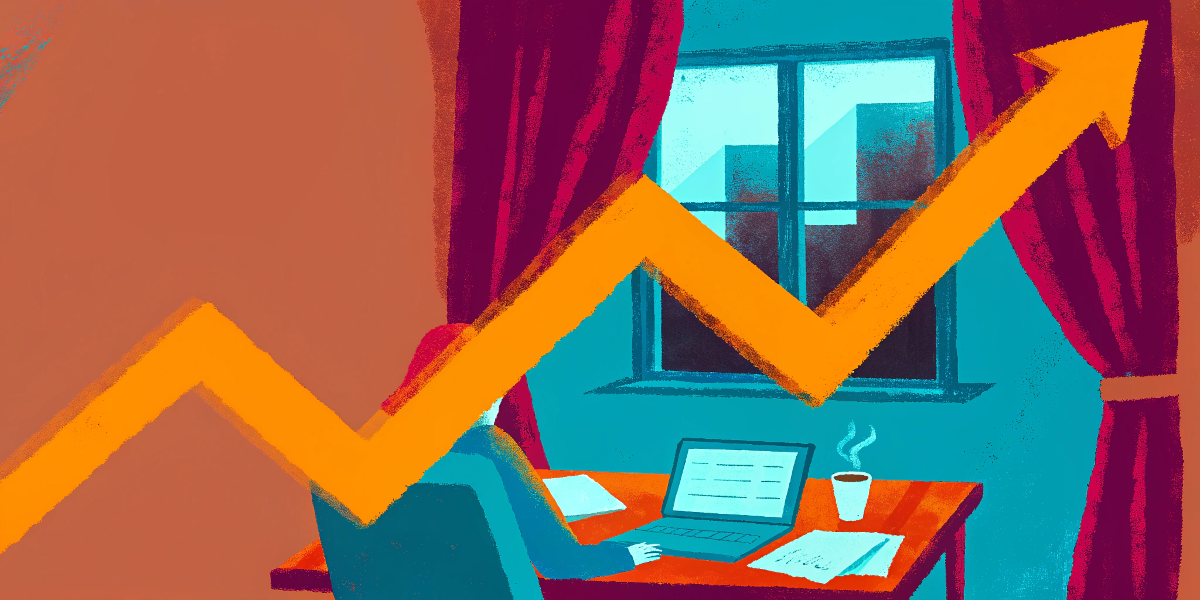
For many companies, working from home is still a novel idea, therefore data on remote work is limited. However, these ten work from home statistics appear to indicate that allowing employees to work from home, or working from home yourself, has tremendous value:
1. Employees are more productive when they work from home
To make a profit, businesses require productive professionals. Employees, on the other hand, are only productive around 77% of the time, according to research, and are more likely to be productive when working from home.
Majority of the employees polled in favour of being more productive when working from home. This is because of the lack of noise and interruptions that come with working in a crowded workplace, the removal of daily commutes, and the improved comfort of self-described introverts.
Coworkers, ringing phones, loud discussions, and individuals moving around in the workplace are all common sources of distraction for employees. It takes an employee an average of 23 minutes to refocus after being distracted. Most of these distractions are not even an issue when working from home. Introverts claim that they can get more work done when they’re at home, away from the pressures of having to interact socially with coworkers.
Others attribute their greater productivity to the fact that they are no longer wasting hours each day driving to and from work. Because they don’t have to commute, they’re more at ease and less resentful of working longer hours from home to complete a job. They also can use time management apps that will help them to stay productive while working from home.
2. Employees who work from home are 52% less likely to take time off
According to a CoSo Cloud survey, employees are encouraged to work more efficiently at home and take fewer vacations. Employees who work from home are more likely to work without calling in sick and also take fewer vacations resulting in lower absenteeism.
3. Managers of remote employees are concerned about reduced productivity, according to 82 % of them
Even though workplace productivity data by Owl Labs have repeatedly demonstrated that remote work increases productivity, managers who work with remote employees are nonetheless concerned about decreasing productivity and focus, as well as whether remote employees complete projects on time. They appear to be less concerned with employee loneliness and employee future.
Pulse surveys are a great way to take your work from home experience up another notch. Pulse survey benefits include greater flexibility, reduced commute times, and increased productivity since you’re able to focus on what matters most – company tasks.
4. Attrition is reduced by 50% when employees work remotely
Because employees are more satisfied at work when they work remotely, there is a significant reduction in employee attrition. When individuals leave a job, it’s usually because they’re dissatisfied with it.
Working from home, according to Stanford Business, is considered as a huge perk that could compensate for any other shortcomings in the position. Employees who stay on the job receive more experience and lower the need to train new employees, enhancing the overall performance of the team.
5. Working from home jobs have grown 115 % in the last decade
According to the State of Telecommuting, work from home jobs have grown 10 times faster than traditional jobs. This measure can be interpreted in a variety of ways. It’s possible that firms are understanding how much more productive individuals are when they work from home, and as a response, they’re expanding their workforce to include more remote working positions. It’s also possible that more people are keen to build their own work-from-home opportunities.
6. People who work from home on a regular basis are more satisfied
Employees who work from home at least once a month are 24 times more likely to be pleased at work, according to OWL Labs. There are a variety of reasons why someone can be happier working from home, but the most important is that happiness rises consistently.
7. Companies with remote positions have a 25% lower turnover rate
According to Owl Labs’ 2017 state of remote work report, positions that allow for working from home had a 25% lower turnover rate. This is most likely related to the job’s pleasure and stress levels; if employees are grateful for the ability to work from home, they are much less likely to quit.
8. Organizations with a completely remote workforce hire 33% quicker
The same report by Owl Labs states that if your entire team works remotely, you’ll be able to fill positions 33% quicker than your competition. This has an impact on your team’s overall output because you’ll be stuck with open positions for much shorter periods of time, and you’ll spend significantly more time at peak teamwork and production as a result.
Building a totally remote team, on the other hand, is difficult, especially if team members are in different parts of the world. It’s critical to create a culture where everyone feels valued as a team member.
9. At least some work is now done from home by 23% of employees
According to the Bureau of Labor Statistics, 23% of American workers currently work from home often. The number of people working from home is steadily increasing, indicating that companies are more confident in their employees’ ability to be productive under these circumstances.
10. 74% of experts believe that remote work will become the norm soon
When asked about the future of work, 74% of professionals predict that remote work will become the accepted norm. According to Forbes, this viewpoint is held by 76% of entrepreneurs, indicating that traditional office spaces, as well as co-working spaces, will soon decline to be in use.
Large firms such as Twitter and Slack have already stated that all employees would be able to work from home on a permanent basis, while Salesforce has just unveiled their hybrid work plan. Because of the precedent these companies are setting, as well as employee expectations, not having a remote work option will be damaging to a company’s ability to move forward.
Other advantages of working at home
According to these working from home statistics, productivity gains, effectiveness, and improved work performance are the evident benefits of working from home, but they aren’t the only ones a business may experience by implementing a work from home policy. The following are only a few of the other benefits:
1. Reduced office expenses
If you own your company and now rent an office, you should calculate how much money you’d save if you went completely remote. Allowing all your workers to work from home at the same time is a risky decision, but if it’s feasible for your company, you could save thousands of dollars per month.
2. Better job opportunities
If you’re recruiting remote employees, you won’t be limited to those in your immediate neighborhood; you’ll be able to hire people from all over the country, and even continents. This broadens your range of possibilities and allows you to locate better matches for open opportunities.
3. Benefits to the environment
People who work from home will not drive or even take public transportation to work. As a result, your team’s greenhouse gas emissions will be greatly reduced, which will have a positive impact on the environment.
Challenges of working from home
Despite its many upsides, remote work isn’t without its drawbacks. For remote setups to be sustainable, it’s essential to address the common challenges employees and organizations may face:
- Isolation and Loneliness
Many remote employees report feeling disconnected from their team. Without the daily interaction that comes with office life, it’s easy to feel left out or disengaged. This can affect mental health, collaboration, and overall job satisfaction — especially for extroverted team members. - Communication Barriers
Remote work depends heavily on digital communication tools, which can sometimes lead to misunderstandings, delayed responses, or misaligned expectations. Without face-to-face contact, building rapport or reading tone and intent becomes more difficult. - Work-Life Boundary Blurring
One major downside of working from home is that it can be difficult to “switch off.” When your home becomes your office, boundaries can dissolve. This often leads to burnout or overwork, especially for employees who feel pressured to be “always available.” - Performance Monitoring and Trust Issues
Some managers struggle with trusting employees they can’t see. As mentioned earlier, 82% of managers are concerned about productivity levels. This can lead to micromanagement or the adoption of invasive monitoring tools, which can erode morale and trust.
Last thoughts
People seek flexible schedules and the option to work from home or in a hybrid work style, even if only on an occasional basis. Furthermore, by implementing a few relatively simple regulations, businesses might save money while increasing productivity and employee morale.
Depending on your arrangement, working from home can be a more efficient work environment than a traditional office cubicle, also allowing you to achieve a better work-life balance. The epidemic has altered the way we work, with more businesses opting for at-home solutions.
Make sure that your staff is comfortable, organized, and healthy to ensure that their production remains at a high and consistent level for months to come.
-

 Collaboration6 months ago
Collaboration6 months ago18 Experts Share Tips for Businesses Switching to Remote Work
-
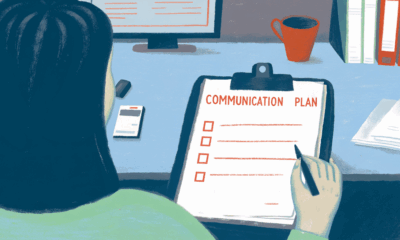
 Communication9 months ago
Communication9 months ago6 Communication Plan Templates With Examples
-
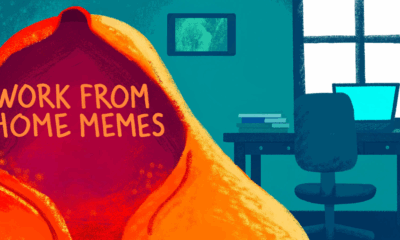
 Collaboration8 months ago
Collaboration8 months ago30 Work From Home Memes: Funny Work Memes to Make You Laugh
-
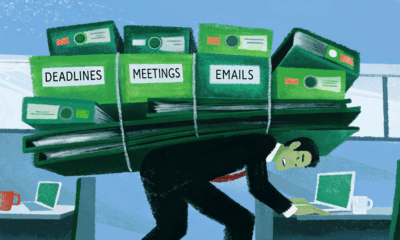
 Collaboration9 months ago
Collaboration9 months ago6 Tips for Lifting the Burden of Too Many Responsibilities
-

 Productivity8 months ago
Productivity8 months agoSuper True Mental Health Memes You’ll Probably Relate To
-
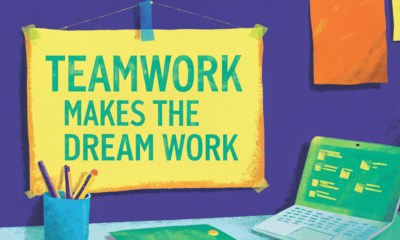
 Collaboration10 months ago
Collaboration10 months ago35+ Collaboration Quotes to Celebrate Teamwork
-

 Collaboration9 months ago
Collaboration9 months ago7 Easy Strategies for Effective Team Communication
-
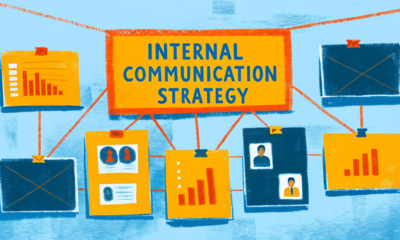
 Collaboration9 months ago
Collaboration9 months agoThe Definitive Guide to Creating an Internal Communication Strategy





